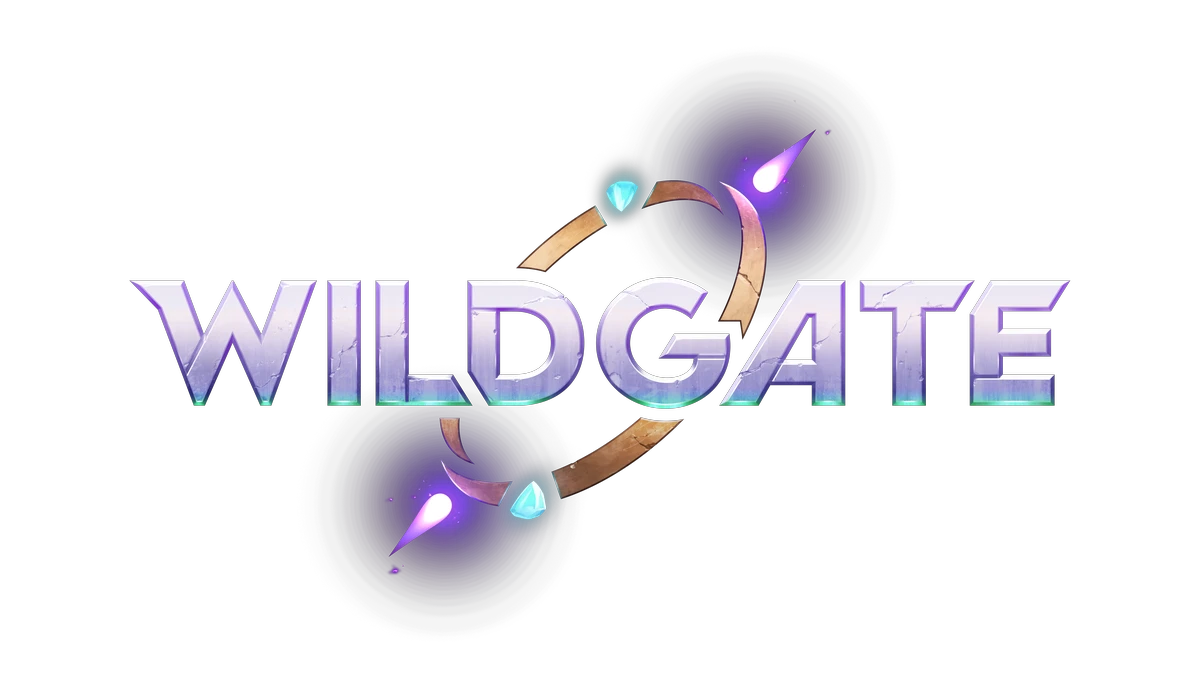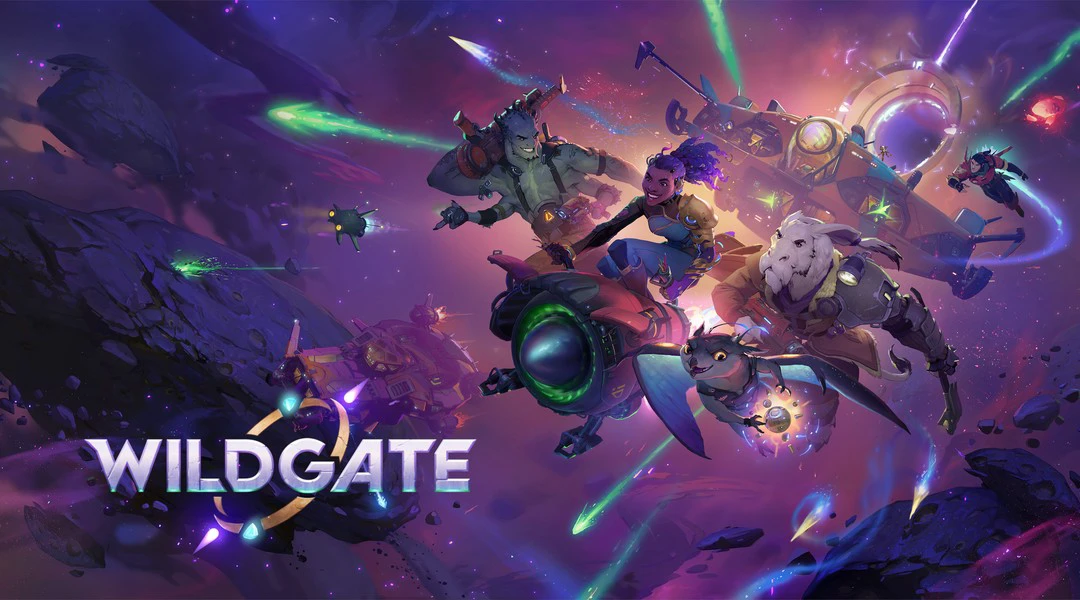Wildgate
Wildgate impressively combines multiple individual combat systems into a low-friction, FPS, competitive space game. Players take control of one of several unique prospectors, each with separate abilities, in search of a mysterious artifact. The various roles require well-managed plans and quick thinking to keep your crew’s ship intact and to best your four adversaries. This creates frequent, fast-paced, and hectic moments, which is notable for a space game. Wildgate offers intuitive and fluid gunplay that feels reminiscent of Halo and Overwatch. The ship mechanics are akin to Sea of Thieves but with distinct hot-swappable upgrades and a fuel management system. Prospectors can engage with several PvE zones, each of which features varying difficulties that all contain diverse loot that rarely disappoints. Matches typically last 30-40 minutes and remain engaging from start to finish. It’s apparent that with continued development, heeding community feedback, and proper marketing, Moonshot Games has a sizable contender in the casual-friendly PvP category.
Gameplay
From the main menu, you can launch into the tutorial, which is the default selected game mode. This tutorial gets you familiar with some very core mechanics, but I felt it wasn’t extensive enough to get players to really understand the game loop. My first game after the tutorial was very confusing; we ended up slamming into a closed portal with the relic, not knowing the portal didn’t open until later in the match. The game is intuitive enough that we caught on to the required game mechanics within just a couple of matches.
One thing immediately caught me off guard: the complete absence of rotational movement. Every person, ship, asteroid, and landmark has a fixed top and bottom orientation. Despite the zero-gravity environment allowing you to move to the underside of ships, you cannot actually stand on these surfaces. This limitation differs from most other space games, which typically allow full rotational freedom. The game clearly takes place in a 3D space, so I imagine this choice was made to prevent disorientation and maintain clarity since the game can use a standard 2-axis compass and a 2D map.
Each match starts in a similar manner; there are five ships, crewed by teams of up to four, that are scattered around a deceptively small area of space. Also scattered around the map are several PvE areas. Each team is placed within a couple hundred meters of one of these points of interest, encouraging them to loot before venturing deeper into space. My crew found this was a good strategy, as it was surprisingly easy to be blindsided by another team, and an un-upgraded ship was a major disadvantage. There are around a dozen of these PvE zones, and I had their layouts and objectives mostly memorized after several rounds. We felt we only needed to complete one or two of these locations to feel confident enough to engage players.
![[Image Description]](/article_images/content/161f06ef43ec.webp)
Ship Upgrades
The ship upgrade system was brilliantly implemented and allows for a ton of flexibility. I expect we’ll see upgrades regularly added, which is a simple medium for the developers to keep the game alive. Each ship varies in the number of guns and “hardpoints” on board. Ship weapons fire relatively weak projectiles by default, and hardpoints require an upgrade device to be plugged in. You can swap either at any time. The hardpoint devices covered a wide spectrum of abilities and passives. Some notable ones were the “Ammo Regen” (continuously generates ammo), “Smuggler’s Turn” (adds a sharp-turn maneuver when piloting), and “Mine Layer” (enables dropping proximity mines behind the ship). There were about a dozen of these hardpoint upgrades, most of which were passive effects. There was one that stood out from the rest: “Laser Ram.” This upgrade adds a roughly 10-meter-long laser to the ship wherever it’s placed. Getting the ram meant completely altering our play style. It went from strategic, well-coordinated attacks to charging anyone we see.
Victory
There are two ways to win. You can either be the last ship standing, or you can escape with the Relic. Neither of which is particularly straightforward to achieve, but it’s highly dependent on the skills of the other players. In our playthrough, we found using the lighter, less armed ship called the “Scout” made escaping with the relic easier, while one like the “Privateer” did significantly better in combat. Acquiring the relic also means entering the relic’s loot room, which always has a special upgrade that assists the escape. A victory awards you with extra XP. I would like to see more rewards for winning; maybe even a victory counter on your ship.
Boots in Space Combat
Combat in this game was a blast, both on foot and in the ship. Gun combat typically consisted of players launching themselves toward an enemy ship, boarding, and trying to wipe out the crew. The respawn time was only a few seconds, making this strategy very difficult. Once everyone was dead, that leaves only a few seconds to overload their ship’s reactor, steal their upgrades, stop their ship, and/or lower their shields. The guns feel excellent, and the combat reminds me of the earlier Halo games regarding the time to kill and the overall feel of the guns. There’s quite the variety of weapons, such as a healing gun that can both heal friendlies and damage enemies, and a rocket launcher that does significant damage to ships. My personal favorite was the “AimE,” which fires bursts of homing rounds. I don’t believe it was too powerful, but I think it played a major role in allowing cross-platform to work so seamlessly.
Ship Combat
Ship combat was enjoyable, but it lacked the skill gap that other games such as Sea of Thieves have. Each ship is equipped with guns at the front and back, and each weapon can rotate what feels like 120°. This large coverage means you can target enemies from almost any position. Because of the wide firing arc, the primary focus of ship piloting was simply chasing the enemy or evading them. In most games with vehicle combat, you’ll inevitably experience a point where you blunder or get outsmarted, and the enemy skillfully capitalizes on it, placing you perfectly in their crosshairs. In this game, there was never a point where I felt the piloting skill of one team gave them an edge in the fight. The one exception was with the laser ram. Enemies equipped with the front-mounted ram required us to put more thought into maneuvering away from it. Despite the overall ship experience being enjoyable and exciting, there are a few changes I think it would benefit from. A possible change would be to reduce the range of motion for the guns or give them a steeper damage dropoff with distance.
Progression
Modern multiplayer games often struggle with the issue of progression. Keep in mind, this review was written prior to the game’s official release, and it’s common for games to receive microtransaction-laden updates shortly after launch in recent years. The developers have said Wildgate will be a premium game, but they’ve remained indecisive on future monetization strategies. You can read more here. On launch, there will be a "Renegade Edition" that includes various skins.
Update (July 22nd, 2025): The game released with microtransactions that must be purchased through a virtual currency. They also bundle skins and don't allow you to purchase individual items, most of the items are only temporarily in the store, and they price the items slightly higher than the currency packs. For example, the ship costs 1,200 Credits (~$12 USD), but they sell them in packs of 500, 1,000, 2,100, 3,800, and 5,600, so you would need to overspend. They implemented all the familiar profit-maximizing strategies designed to nudge players into spending more than intended.
The progression system is made up entirely of battle pass-esque groups of rewards called “Adventures.” Each of the seven characters receives two adventures, and each adventure contains sixteen rewards. If it remains free, I believe this will be one of the more enjoyable progression systems in modern multiplayer games. Many games have taken away progression in favor of having players outright buy their rewards (I’m looking at you, Overwatch 2). Other games include battle passes, which are usually filled with items you’ll never use, with a few exceptions. In Wildgate, each adventure contains at least one desirable reward, which allows players to target their progression, focusing their effort on a specific item rather than just waiting to get to the end of a massive battle pass. I hope this system remains in the game, even after the inevitable inclusion of microtransactions. Standard gameplay earns XP, while three additional daily challenges offer substantial rewards. I would expect more ways to earn XP to be added later.
The game locks all but one ship and three characters in the beginning. Each character has slightly different health and two unique abilities. My personal favorite was Kae, who can teleport 100 meters away and has a 10-meter interaction range. I noticed it was common for skilled players to use Ion, who can deal damage to ships with his melee, a very useful skill for players who prefer boarding enemy ships.
There are four ships: Hunter, Bastion, Privateer, and the Scout. Like the characters, each has slightly different health and two unique abilities. The primary difference between them is their gun count and placement and their health.
Art, Style, and Design
Wildgate takes on a vibrant, stylized art style with a clean, slightly cartoony aesthetic. It has futuristic yet accessible sci-fi elements with bright, overly saturated color palettes. The characters clearly have separate origins, and they each seem to have a unique story to tell. I’d be curious to see how far they play into this, but for now, character backstory is very limited. The art style also includes distinctive silhouettes and high clarity, making it easy to see ships far into the distance. Large asteroids and space storms appear to be the only things stopping you from seeing players across the map area.
The UI had a fairly generic techy HUD similar to games like Overwatch, Halo, and Destiny. When I switched from keyboard and mouse to controller, I appreciated that nearly every button bind was well documented on the UI, so I didn’t have to look at the controller layout or replay the tutorial. I simply looked at the equipment UI to see which button activated which ability.
Performance and Stability
I played on a mid-to-high-end PC with a mouse and keyboard but also tested the game on the Steam Deck. The game performs decently, and I only experienced one bug and no crashes during my 25 hours of gameplay. The bug occurred on the first match each time I launched the game, where it would run at around 5 FPS. A solution that consistently worked was to change my FOV by 1. I normally wouldn’t mention such a small thing that is likely to be patched by release, but it was the only bug I experienced, which is rare for new games.
On the Steam Deck, I ran it at medium graphics with resolution scaling set to 70%, and it ran between 30 and 45 FPS. The PvE zones were the primary source of performance drops.
Verdict
Wildgate fills a hole in the PvP space that several games have failed to do. Sea of Thieves abandoned a similar dedicated PvP mode years ago, and Skull and Bones lacks everything outside of ship combat. At first glance, Wildgate may not seem unique, but it truly is a well-executed mix of genres. With the proper upkeep from the developers, this game can easily build a loyal player base. My primary concern for this game is lack of content. There are only a few PvE enemies, a few objective types, and a few ship gun types. I would love to see larger, boss-like aliens that offer larger rewards. Perhaps there could be randomized challenges to obtain the relic. Despite the lacking content, I think $29.99 is a fair value given the potential longevity the game has. Wildgate provides the kind of emergent gameplay moments that create lasting memories. This promising debut from Moonshot Games demonstrates that with creativity and player-focused design, there’s still plenty of innovation to be found in the competitive multiplayer space.
Price and Release Date
Wildgate releases July 22nd on PC (Steam), PlayStation, and Xbox for $29.99.
Learn more about Wildgate and its developers, Moonshot Games, on their official website. Stay up to date on details about the game on the official Bluesky and YouTube. Join their community on Discord.



